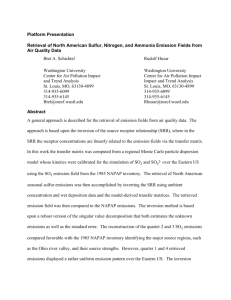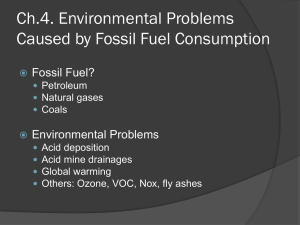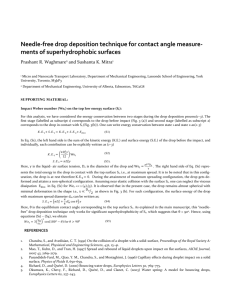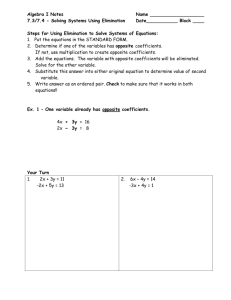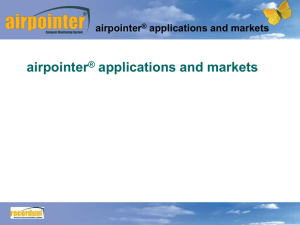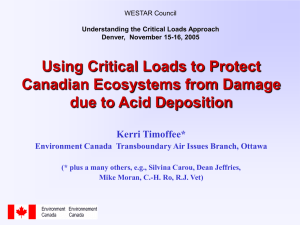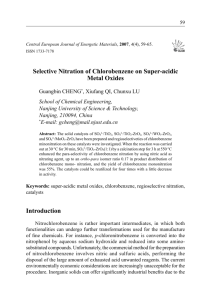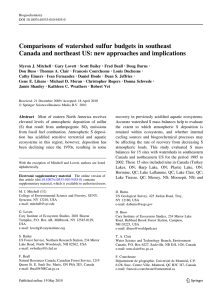Derivation of SO2 – SO42- transformation and deposition
advertisement
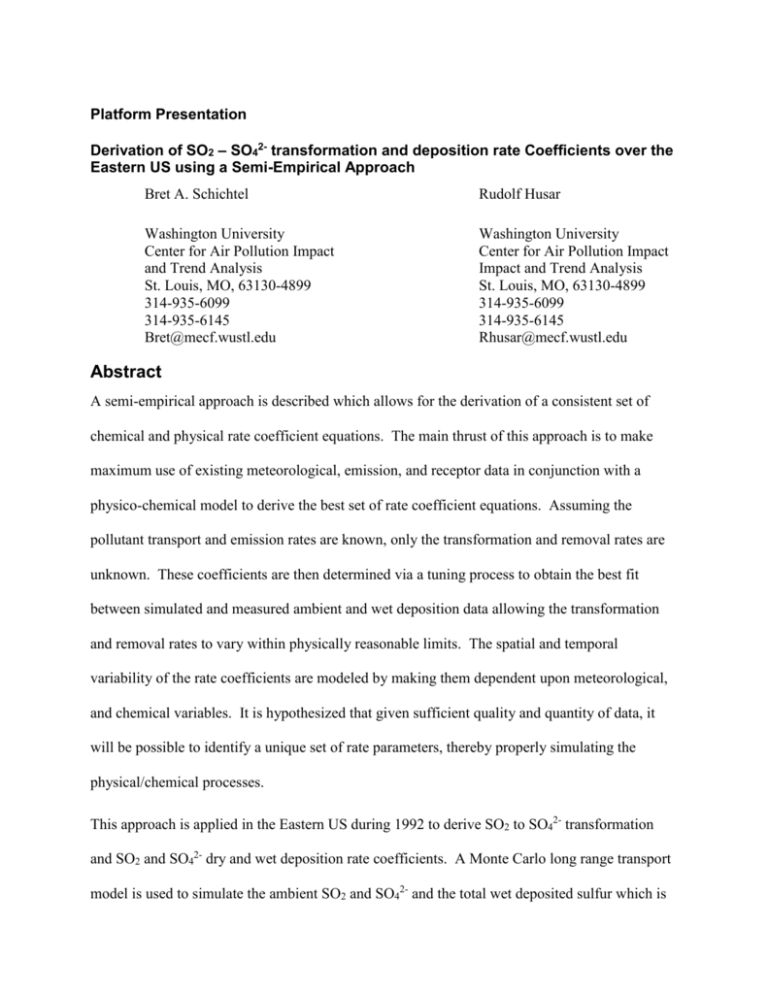
Platform Presentation Derivation of SO2 – SO42- transformation and deposition rate Coefficients over the Eastern US using a Semi-Empirical Approach Bret A. Schichtel Rudolf Husar Washington University Center for Air Pollution Impact and Trend Analysis St. Louis, MO, 63130-4899 314-935-6099 314-935-6145 Bret@mecf.wustl.edu Washington University Center for Air Pollution Impact Impact and Trend Analysis St. Louis, MO, 63130-4899 314-935-6099 314-935-6145 Rhusar@mecf.wustl.edu Abstract A semi-empirical approach is described which allows for the derivation of a consistent set of chemical and physical rate coefficient equations. The main thrust of this approach is to make maximum use of existing meteorological, emission, and receptor data in conjunction with a physico-chemical model to derive the best set of rate coefficient equations. Assuming the pollutant transport and emission rates are known, only the transformation and removal rates are unknown. These coefficients are then determined via a tuning process to obtain the best fit between simulated and measured ambient and wet deposition data allowing the transformation and removal rates to vary within physically reasonable limits. The spatial and temporal variability of the rate coefficients are modeled by making them dependent upon meteorological, and chemical variables. It is hypothesized that given sufficient quality and quantity of data, it will be possible to identify a unique set of rate parameters, thereby properly simulating the physical/chemical processes. This approach is applied in the Eastern US during 1992 to derive SO2 to SO42- transformation and SO2 and SO42- dry and wet deposition rate coefficients. A Monte Carlo long range transport model is used to simulate the ambient SO2 and SO42- and the total wet deposited sulfur which is compared to measured data. The resulting best fit spatial and seasonal patterns of the rate coefficients are presented as well as the simulated SO2 and SO42- ambient concentrations and wet deposition rates.
